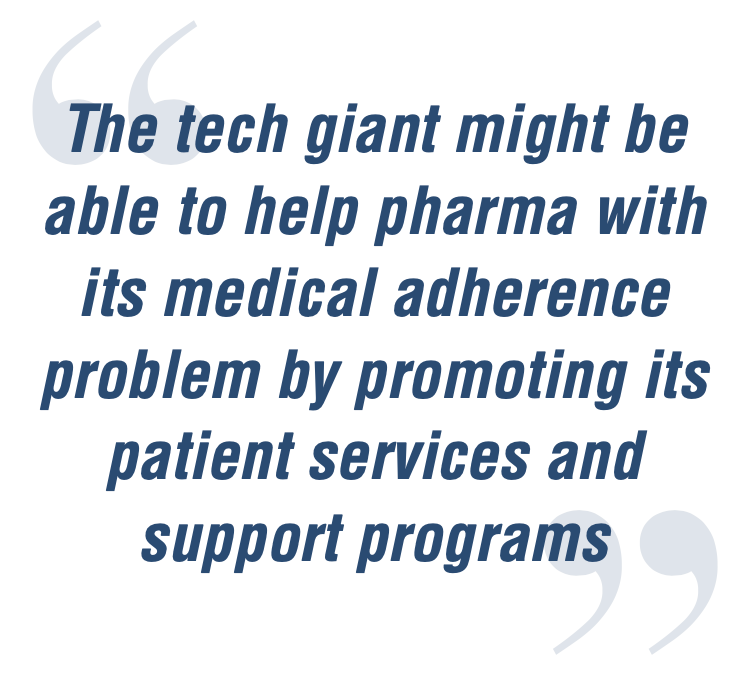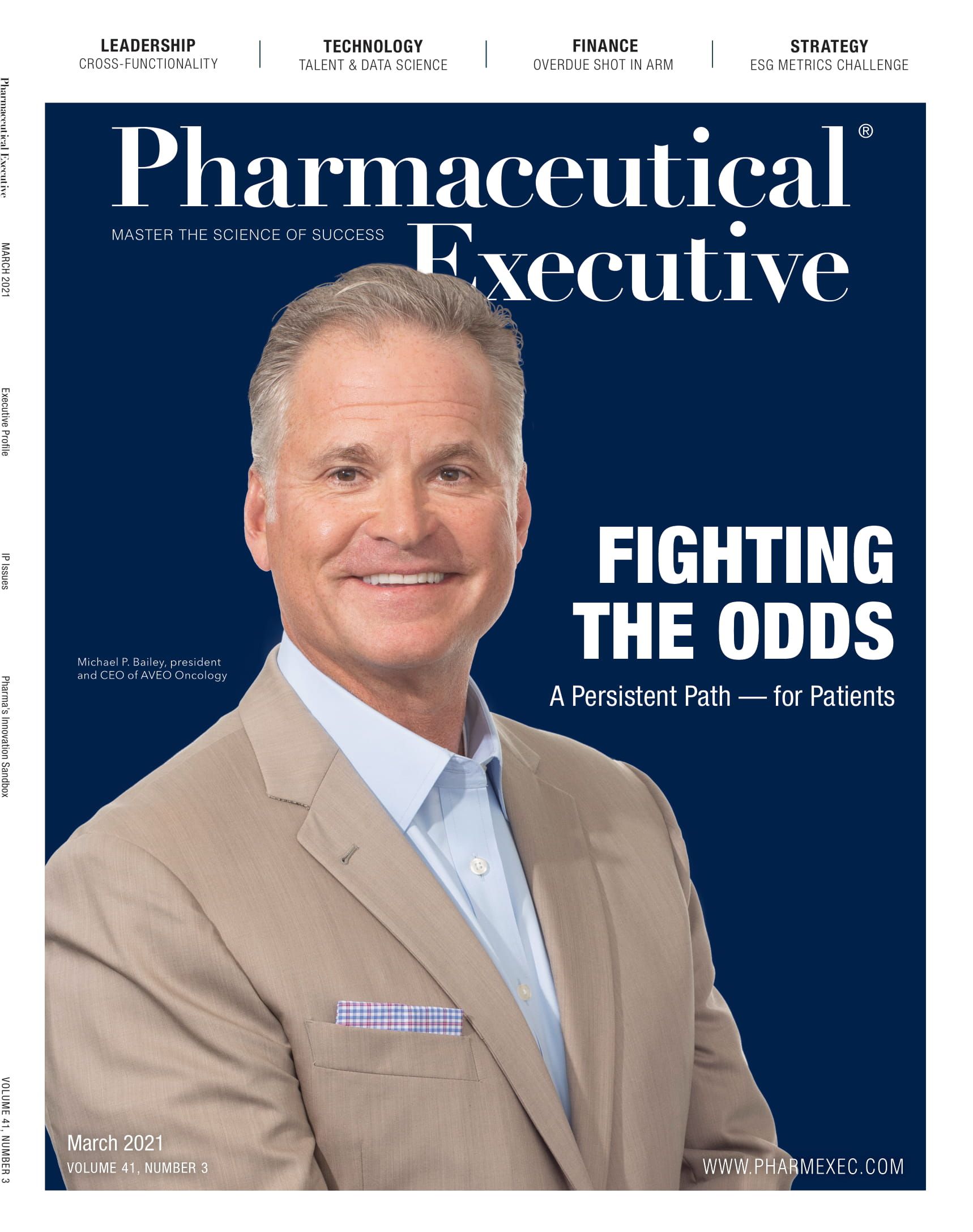The Amazon Effect: A Data-Fueled Customer Experience
What the future emergence of Amazon Pharmacy and the company’s aim to own the health experience may mean for pharma manufacturers’ engagement strategies and role in Rx delivery.

For an industry as complex as healthcare, the news of Amazon’s digital pharmacy late last year is more sensational than it is disruptive—at least in the near-term. At first glance, Amazon seems focused on simply adding prescription drugs to its growing list of offerings. But it’s more likely that the e-commerce giant is looking to entice consumers with a better experience, glean insights from the point of sale and build a more robust platform. In other words, it’s a long-term strategy to collect and use data to paint a complete picture of consumer behavior.
Today’s consumer wants convenient solutions
The timing of Amazon Pharmacy’s debut isn’t a coincidence: The new drug delivery platform is poised to benefit from big changes in consumer behavior, namely the desire for human-free transactions without leaving home. Given its mission to be “Earth’s most customer-centric company,” Amazon is using prescription drugs to attract and retain new customer sets—and betting that the general COVID-19-induced habit of doing everything from home will stick around.

For someone with a chronic disease that’s well managed on a branded drug, for example, it’s easier to hit purchase on an app that she’s already using to buy paper towels, kids’ shoes, and art supplies, knowing it will arrive on her doorstep two days later. And this plays into Amazon’s ongoing goal to attract more customers to its Prime platform. The target? The over-65 crowd. Otherwise known as the cohort most likely (90%) to be taking at least one prescription drug.
We shop for everyday essentials like groceries via online platforms and manage our health via telehealth and remote monitoring. Do we really need to be physically present to buy our prescription drugs? Some people will use the service just because of the familiar Amazon experience, but it could be hard to change the habits of those accustomed to swinging by the pharmacy with a newly written prescription in hand. That is, unless patients begin telling the doctor’s office staff that Amazon Pharmacy is their preferred pharmacy, and not the CVS that’s on the way home.
CVS Health already offers same-day delivery of prescription drugs. For a fee, of course. The question is whether patients are willing to pay more to have their prescriptions in hand sooner? Or, will the price tag of two-day delivery (free for Prime members) be more attractive? There also could be some growing pains if Amazon Pharmacy isn’t equipped to handle more complex transactions like when a payer rejects a brand drug prescription or when a patient wants to pay with a copay card. Will authorization support, provider callbacks, and coupons all work as well as they do in brick-and-mortar settings?
Amazon Pharmacy plans to have pharmacists available via phone 24/7 to answer questions about dosing and side effects, but it’s still unclear how the organization plans to adhere to regulations like ensuring that prescription drugs land in the right hands. Will Amazon drivers be tasked with verifying consumers’ identity upon delivery? Drugstores can’t compete with the “always-on pharmacist” but they do have pharmacists available to answer questions (and to match your personal information to their records) and they’re equipped to fulfill healthcare services like administering COVID-19 vaccines. Amazon Pharmacy could force retail pharmacies to make further investments in the delivery of care as a point of differentiation, unless the retail giant has plans to expand what’s offered at its brick-and-mortar locations like Whole Foods.
It’s not about the sale, it’s about the data transaction
Amazon rarely enters a new market for the immediate returns. Instead, it’s often about amassing enough data to develop and scale for future offerings. In this case, same-day delivery of prescription drugs already exists, and other business models offer discounts for the uninsured and those with high-deductible plans. So, what is Amazon really going after? More data, more consumers, and more data about more consumers. And with more people buying drugs from the tech company, its reach becomes more attractive to suppliers.
Amazon is aiming to complete the data circle. In other words, it’s adding data from drug purchases health-related product searches to everything it already knows about its customers: shopping habits, food preferences (Whole Foods), entertainment choices (Amazon Prime streaming service), who comes to the front door (Ring), music selections (smart speaker), and not to mention every question they’ve ever asked Alexa. We can’t underestimate the importance of collecting this type of data. In fact, social determinants of health (SDOH), like where we live and what food we eat, determine as much as 80% of healthcare outcomes and far outweigh the impact of the medical care we receive.
The idea is to use that data to understand and predict consumer behaviors and to design and offer desirable services. That frame of reference can help Amazon cross-sell and own the customer experience on everything, including health. The consumer insights will attract suppliers and help Amazon to build a network. The tech company will do this over five to 10 years, will do it better than anyone else, and will edge out healthcare stakeholders’ fledgling efforts to be patient-centric.
Healthcare ecosystem: Is Amazon a friend or foe?
The question, of course, is how the new drug delivery solution will affect pharma and other healthcare stakeholders in the immediate term. Businesses like GoodRx that have a similar cost-saving customer pitch are most likely to feel the effects. Other entities that sit along the prescription drug supply chain like wholesalers and pharmacy benefit managers (PBMs) largely will be unaffected—for now, anyway. Drug distributors can fend off competition with their scale and purchasing power, but Amazon could look to boost its bargaining power by acquiring a small PBM. That way, the company would obtain licenses and learn the ropes before setting its sights on redesigning the business.

Amazon shouldn’t be much of a direct threat for pharma because most companies, especially branded ones, aren’t in the distribution business. In fact, the tech giant might be able to help pharma with its medical adherence problem by promoting its patient services and support programs. Perhaps pharma companies and Amazon could become allies on price transparency and stripping out the takings of various middlemen. Let’s not forget that Amazon already uses RxAdvance, a cloud-based PBM, to negotiate directly with drug manufacturers.
Of course, we can’t mention price transparency without immediately thinking of the drug pricing debate. Amazon surely is interested in finding cost savings for branded drugs, but for all its vaunted negotiating power, it doesn’t have its own control mechanisms or the scale that UnitedHealth and Anthem already have on the prescription drug benefit. Considering the path Amazon went down with its Haven venture, we should assume that “supplant the payer model” is scribbled in its drug delivery playbook. Either way, if the intention was to use its Haven partners to help shake up the traditional healthcare model, that’s no longer an option.
In the meantime, the average pharma company’s best bet may be to partner with Amazon on its data efforts. The exception is companies that have a broader SDOH strategy that helps them get a handle on medical care, genetics, and other data types to fill out a patient’s health data profile. That means that Amazon’s latest move puts them on a level playing field in some regards. But even in that example, Amazon has access to a fuller data picture just by virtue of the wide breadth of industries it plays in.
Some pharma companies could do well by laying out a broad, long-term view of what the full healthcare landscape could look like and determining what part they want to play in it. At the end of that exercise, they might end up ignoring or joining forces with the new entrant. Either way, Amazon will leave an indelible mark on the drug industry and the broader healthcare ecosystem, even if its effects won’t be felt for a decade or more.
Pratap Khedkar, Managing Principal, Howard Deutsch, Principal (Partner), Strategy
and Transformation Practic; both with ZS Associates

The Misinformation Maze: Navigating Public Health in the Digital Age
March 11th 2025Jennifer Butler, chief commercial officer of Pleio, discusses misinformation's threat to public health, where patients are turning for trustworthy health information, the industry's pivot to peer-to-patient strategies to educate patients, and more.
Navigating Distrust: Pharma in the Age of Social Media
February 18th 2025Ian Baer, Founder and CEO of Sooth, discusses how the growing distrust in social media will impact industry marketing strategies and the relationships between pharmaceutical companies and the patients they aim to serve. He also explains dark social, how to combat misinformation, closing the trust gap, and more.